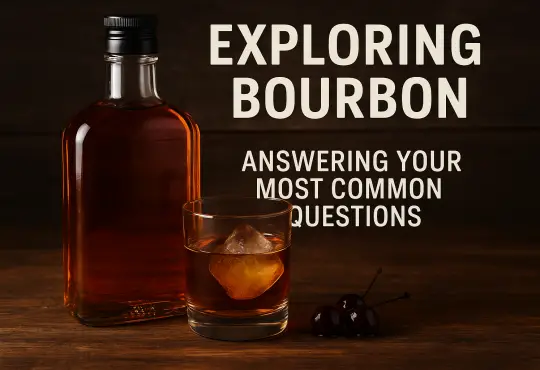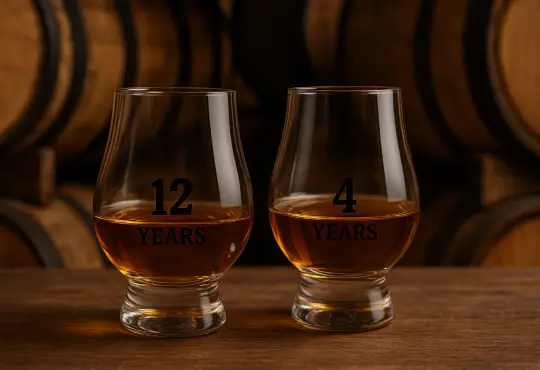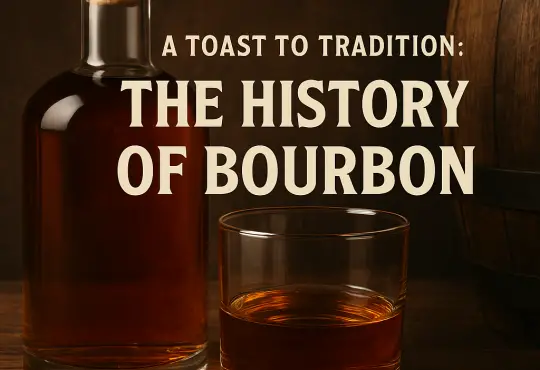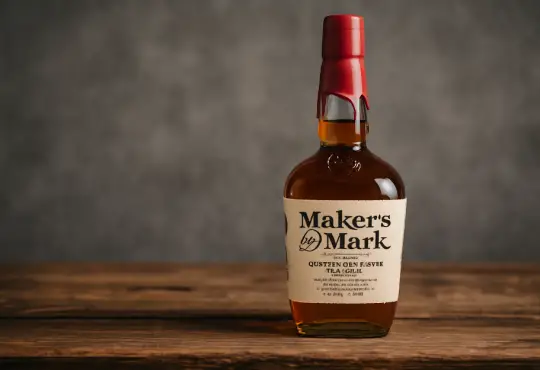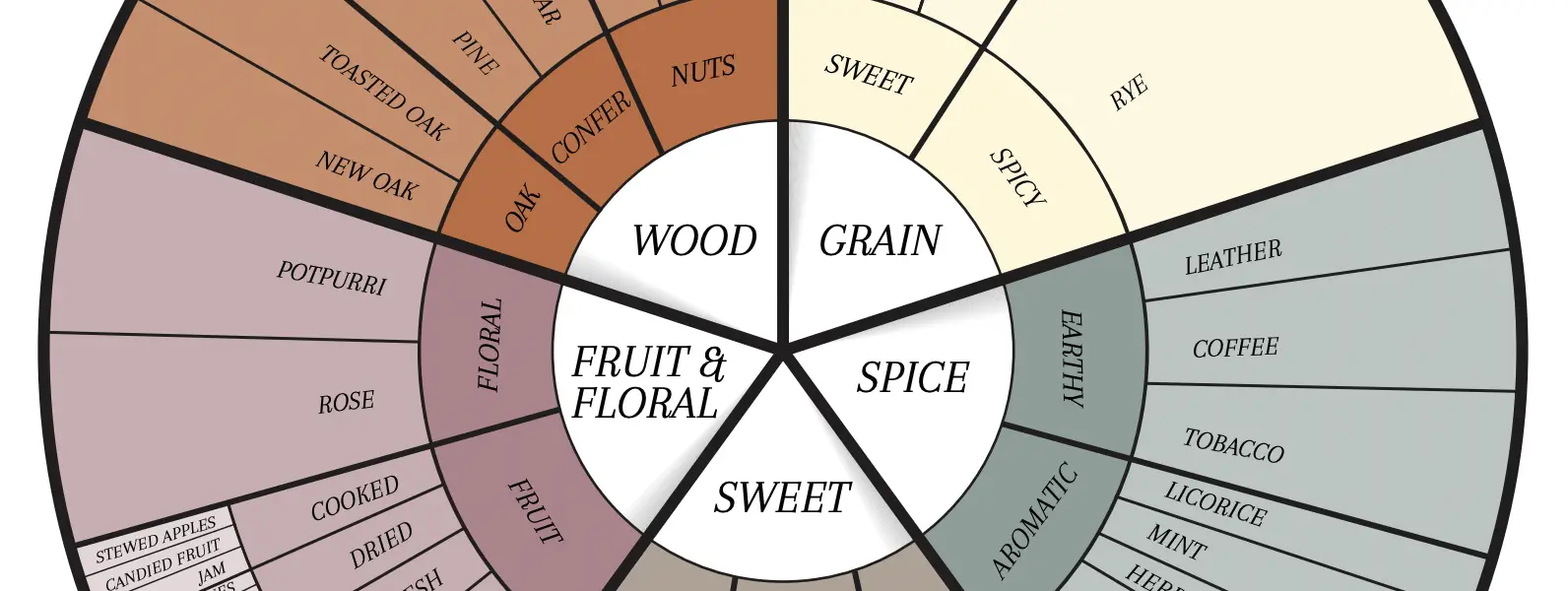
Bourbon Tasting Wheels – The Must Have For Any Bourbon Newbie
Welcome to the world of bourbon tasting! Bourbon is a complex and nuanced spirit, renowned for its rich flavors and aromas. Whether you’re a seasoned bourbon connoisseur or just beginning your journey into the world of whiskey, a bourbon tasting wheel can be an invaluable tool. In this blog post, we will explore the concept of a bourbon tasting wheel, its significance in understanding and describing bourbon flavors, and how it can elevate your tasting experience. So grab your favorite bottle of bourbon, pour yourself a dram, and let’s embark on a flavorful adventure!
My Experience With Bourbon Tasting Wheels
Here is where I printed off my first bourbon tasting wheel.
After I started using that bourbon wheel, I actually purchased a fun coin one from the Indiana Bourbon Group and did a cool little video with it.
What Is A Bourbon Flavor Wheel?
A bourbon flavor wheel is a visual representation that categorizes and organizes the various flavors and aromas commonly found in bourbon. It is a tool used to help describe and analyze the complex sensory characteristics of bourbon in a structured and systematic manner.
The flavor wheel typically consists of a circular diagram with different sections or “pie slices,” each representing a distinct flavor category. The categories can vary depending on the specific flavor wheel, but they often include descriptors such as fruity, floral, spicy, woody, caramel, vanilla, nutty, and more. These sections are further divided into subcategories or specific flavor notes within each category.
The purpose of a bourbon flavor wheel is to provide a shared vocabulary and reference point for enthusiasts, experts, and distillers to communicate and discuss the flavors and aromas present in bourbon. It helps individuals identify and articulate the specific notes they perceive while tasting bourbon, enabling them to develop a deeper understanding and appreciation for the spirit.
Using a bourbon flavor wheel can enhance the tasting experience by guiding individuals to pay attention to specific flavors and aromas. It helps to train the palate and develop sensory awareness, allowing for more nuanced and detailed descriptions of a bourbon’s flavor profile.
It’s important to note that different bourbon flavor wheels may have variations in the specific categories and flavor descriptors they include. Some flavor wheels may be more comprehensive, while others may focus on specific aspects or styles of bourbon. Ultimately, the purpose of a flavor wheel is to provide a framework for understanding and discussing the diverse array of flavors found in bourbon.
How Does It Help in Describing Bourbon Flavors?
A flavor wheel is a valuable tool in describing bourbon flavors as it provides a structured and systematic approach to categorizing and articulating the complex sensory characteristics of the spirit. Here are a few ways in which a flavor wheel helps in describing bourbon flavors:
- Vocabulary and Terminology: A flavor wheel offers a shared vocabulary and standardized terminology for describing bourbon flavors. It provides a common language that enthusiasts, experts, and distillers can use to communicate and discuss the diverse range of flavors found in bourbon. By using specific descriptors from the flavor wheel, individuals can effectively convey their tasting experiences to others.
- Organization and Categorization: The flavor wheel organizes bourbon flavors into different categories or sections, such as fruity, floral, spicy, woody, and more. Within each category, there are further subdivisions or specific flavor notes. This structure helps tasters identify and classify the flavors they perceive, making it easier to navigate the complex spectrum of bourbon flavors.
- Reference Point: The flavor wheel serves as a reference point for individuals when trying to identify and articulate specific flavors in bourbon. It offers a visual representation of the potential flavor profiles and provides a guide for tasters to explore the different categories and notes. It helps in developing a more discerning palate and encourages individuals to pay attention to the subtle nuances and complexities of bourbon.
- Comparative Analysis: The flavor wheel facilitates comparative analysis between different bourbons. By using the same flavor wheel, tasters can objectively compare the flavors and aromas of various bourbons side by side. This allows for a more systematic evaluation and discussion of the similarities and differences between different expressions, brands, or aging profiles.
- Consistency and Reproducibility: The flavor wheel promotes consistency and reproducibility in describing bourbon flavors. It provides a framework for evaluating and discussing bourbons in a structured manner, ensuring that individuals can communicate their impressions consistently over time. This is especially useful for professionals, distillers, and whiskey competitions where a standardized approach to flavor evaluation is important.
What Are The Main Categories on a Bourbon Tasting Wheel?
The main categories or sections on a bourbon flavor wheel can vary slightly depending on the specific flavor wheel being used. However, here are some common categories or sections you may find on a bourbon flavor wheel:
- Fruity: This category encompasses flavors associated with various fruits, such as citrus, apple, cherry, or tropical fruits. It highlights the fruity notes that can be found in bourbon.
- Floral: This category includes floral aromas and flavors like rose, violet, lavender, or honeysuckle. It captures the delicate and aromatic characteristics often present in bourbon.
- Spicy: The spicy category represents flavors such as cinnamon, clove, nutmeg, or black pepper. These warm and lively notes contribute to the complexity and depth of bourbon.
- Woody: This section focuses on the influence of oak and wood aging on bourbon. It includes flavors like vanilla, caramel, toasted oak, or sawdust, which are derived from the interaction between bourbon and the charred barrels in which it matures.
- Nutty: The nutty category encompasses flavors reminiscent of nuts, such as almond, walnut, or pecan. These flavors can add richness and depth to the bourbon profile.
- Caramel and Sweet: This section highlights the sweet and caramelized flavors found in bourbon. It includes notes like caramel, toffee, butterscotch, or brown sugar.
- Earthy: The earthy category captures flavors associated with the earth, such as tobacco, leather, or espresso. These notes can add depth and complexity to the bourbon’s profile.
- Herbal: This category represents herbal flavors like mint, dill, anise, or eucalyptus. It adds a refreshing and herbaceous dimension to the bourbon’s taste.
- Grain: The grain category focuses on the flavors derived from the grains used in bourbon production, such as corn, malted barley, or rye. It highlights the distinctive cereal and grain characteristics in bourbon.
- Other: This section often includes a miscellaneous or catch-all category where unique or less common flavors can be described. It allows for the inclusion of specific flavors that may not fit within the other defined categories.
Conclusion
As we conclude our exploration of the bourbon tasting wheel, we hope you’ve gained a deeper appreciation for this invaluable tool in the world of bourbon tasting. The flavor wheel provides a structured framework for understanding and describing the diverse range of flavors found in bourbon. It helps to sharpen our sensory awareness, enhance our tasting experience, and foster meaningful discussions about the complexities of this beloved spirit.
Remember, tasting bourbon is a personal journey, and everyone’s palate is unique. The bourbon tasting wheel is merely a guide, and your own perceptions and preferences should ultimately guide your enjoyment of this fine spirit. So, the next time you savor a glass of bourbon, take a moment to observe the aromas, explore the flavors, and reflect on the remarkable craftsmanship that goes into creating each bottle. Cheers to the world of bourbon and the delightful discoveries that lie ahead on your tasting adventures!

